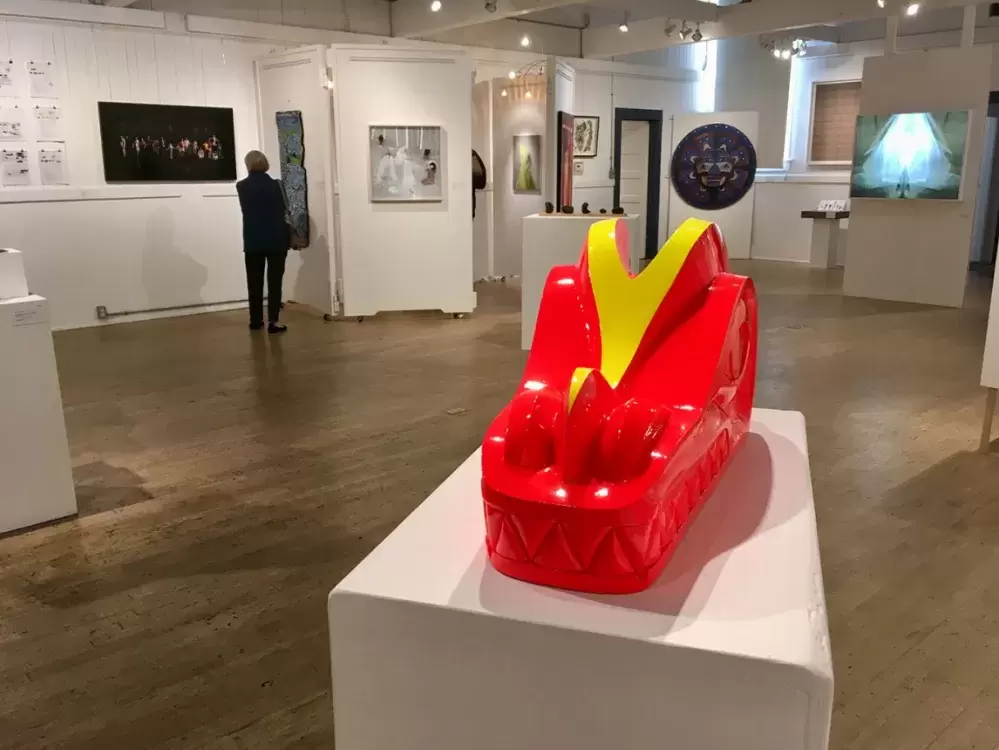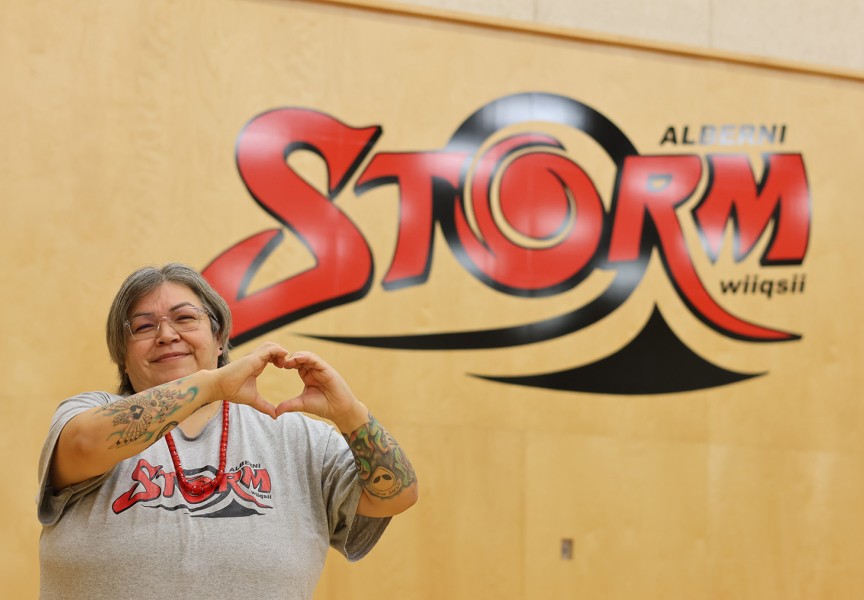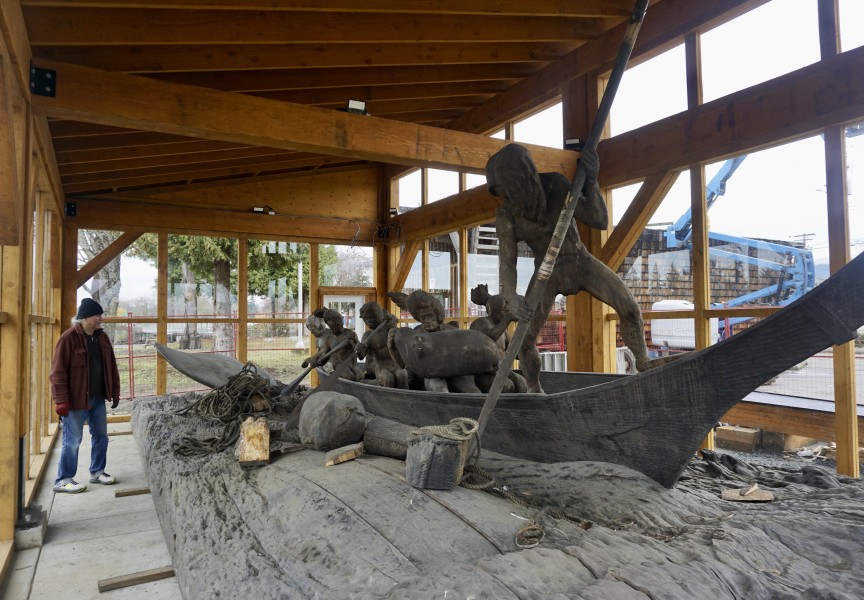Hupacasath artist Klehwetua, Rodney Sayers, was honored this past month by a nomination in the Salt Spring National Art Prize (SSNAP)—a competition that happens every two years, and just wrapped up its third season.
Over 50 artists from across Canada were selected, out of nearly 1,000 in total, some who entered more than one piece.
The format was online only at first, so Sayers (and all the other artists) had to meticulously photograph their work, then write up a quick bio on the work to submit. Three jurors who had never seen the pieces in real life made the decision about who would be in the final 52.
“It’s really a massive undertaking. And the fact that there was over 2,000 submissions and they widdled it down to (52) is quite an amazing accomplishment,” said Sayers from the ferry while on his journey home from the exhibition. “It was really a diverse selection of works in different media.”
Sayers attended the gala hosted by SSNAP Saturday night, Oct. 19, where the final winners in the 10 categories were announced. He didn’t make the cut, but he was happy to have been honored by a nomination, and to see the works from other artists, too.
Sayers entered his piece, Serpent GT, an orange and yellow serpent head made from red cedar. It’s a “hot rod” color scheme, with the yellow being placed as a “racing stripe” along the side of it, said the artist. GT stands for Gran Turismo (like the Ferrari).
Sayers was raised in Port Alberni, where Hot Rod enthusiasts and their cars were plentiful. As a child, he also had eyes for these toys, but with his age and wisdom, owning one is no longer his goal—though him and his partner do have a 1966 Austin Healy Sprite, which is still fun, he added.
Cedar was used due to its prominence in Nuu-chah-nulth culture.
“It’s carved from western red cedar, which is one of the main materials of the carving tradition of the Nuu-chah-nulth. And it obviously has thousands of years of history in the art forms of the west coast,” said Sayers. “Not just Nuu-chah-nulth, but most of the west coast nations had access to it and used it. I’m using a material that is rich in those carving traditions.”
Serpent GT will be united at some point with a few other pieces he’s currently working on, including two paddles which are also colored with the hot rod theme. It’s part of a package that’s actually been in the process for years, he said, but has taken a while to come together. Because Sayers works--as he describes it--slow and contemplatively, his pieces are moulded as he goes along. There isn’t always a set plan that he follows, so it can take a long time before he completes a project. And sometimes he even needs to walk away from the work before deciding what the finishing touches should be. That happened with Serpent GT, when he was deciding on the color.
“I just happened to have those two jars of paint,” said Sayers. “And I did some tests and I contemplated it. And I thought, ‘Yep. This is how it’s going to be’.”
“I’m honoring the art form. I’m not making light of it,” he continued. “What this idea of tradition is, and that tradition is a living thing. It isn’t static. It changes and evolves, and that’s what I believe.”
Sayers clarifies that he isn’t making a statement about Nuu-Chah-Nulth culture, or some broader art movement. He speaks only for himself, his work and his beliefs about what he is doing. He consulted with chiefs, elders and various advisors, to ensure he doesn’t cross lines between his playfulness in art and ceremonial regalia. But he does enjoy taking some aspects of culture and making people think more deeply about it with the work he does.
The serpent is special to him, as well. It comes to him from his grandmother. And so while he added the colors of a hot rod to it, he has the utmost respect for it, too.
“It appeared in her dance regalia and her ceremonial regalia. So that was her property,” he said of his grandmother’s connection to the serpent. “It was part of our visual language. So people would see that and they would say, ‘Oh. That belongs to Annie Watts. That’s her property’.”
“For me, it’s about that I have these influences, but we don’t live in a vacuum as First Nations people,” reflected Sayers. “People tend to think we shouldn’t be influenced by popular culture, or television or movies. But we are.”







